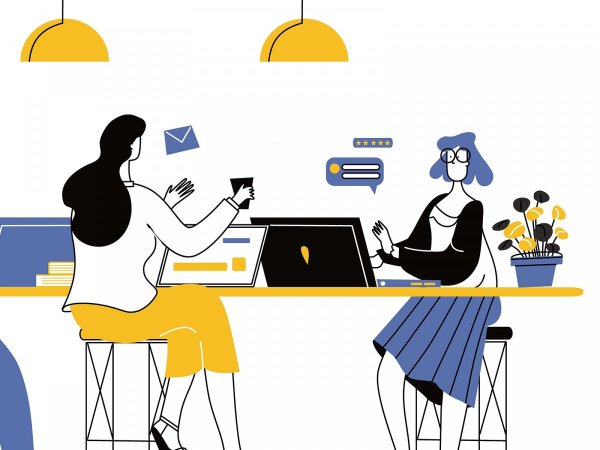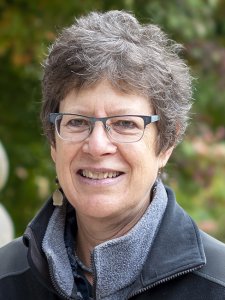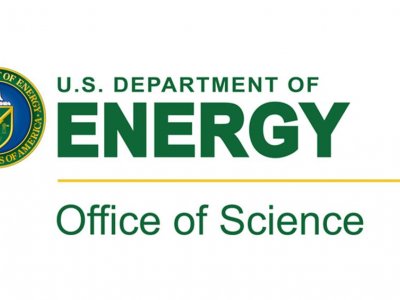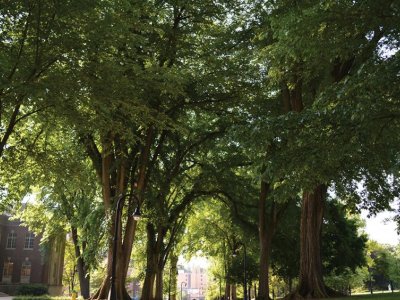I recently became the Barry and Shirley Isett Professor in Civil and Environmental Engineering (CEE) at Penn State. As the first woman with an endowed title in CEE, I look back to where I have been, and how far I have come. Memories that have shaped me emerge: the moment that I decided that I was going to become a scientist, not a writer; the moment that I landed on U.S. soil for the first time; the moments that I felt so small and intimidated in my first two years of graduate school; the moment that I became a mom and I almost quit my faculty dream; and the moment that I came to Penn State. Many stories can be shared. However, what stands out again and again in these moments is the power of women advising and the power of women holding hands.
I grew up academically as an environmental chemist, with both a bachelor’s and a master's degree in environmental chemistry. When I joined Catherine Peters’ group at Princeton University to pursue a Ph.D., the expectation was for me to continue along this path, possibly adding some microbiology insights when quantifying biodegradation rates of organic contaminants.
In my second year in graduate school, I took a class on numerical methods, a topic that I was exposed to for the first time. I was enchanted by the magical power of modeling—feeding equations and numbers, and the code would spit out another set of numbers "forecasting" the future of anything, including chemicals. However, numerical modeling was not Peters' expertise at that time. What should I do to reconcile my fascination for a completely different research trajectory and my loyalty to my advisor and Ph.D. project? As an international student in my second year, I could possibly suffer a substantial financial consequence if I lost Peters’ support. Can I tell her? Should I tell her?
A couple of agonizing months of thinking back and forth quickly flew by. I finally decided to talk to Peters. I remember the sunlight brightly glancing through her office windows, shining so happily it almost stung. I heard myself babbling, telling her my change of heart and that I would prefer not to continue biodegradation experiments. I apologized for disappointing her, and then I stopped, without any idea of what was going to happen next. The air felt stagnant, as if time had stopped. She did not say much for a while, probably still allowing the news to sink in. It probably shocked her as much as it shocked me. It might not have been that long, but the quietness felt like a century.
Then I saw a smile on her face. She seemed almost amused.
"Why are you so nervous, Lili?" she prompted.
"Are you going to be really upset? Will you kick me out of your group?" I asked.
Her smile grew bigger.
"This comes as a surprise for sure. But I am so glad that you figured something out for yourself. You figured out what excites you. Obviously, you will need to change your project. But we can figure something out," Peters said. "Many people do not know what excites them. You are fortunate to figure that out. Don't you think? I am happy for you."
"Really?"
"Yes, we can work something out."
She patted me on my shoulder. My heart lightened as if a heavy mountain was lifted. Many meetings followed. It took us a whole year to figure out my new Ph.D. topic, but we moved forward. At that moment, I did not realize how empowering she and that conversation had been. She taught me that it is ok to change plans, and it is ok to go after my passion. She taught me that there will be a way, even if it is invisible at that time. That idea has emboldened me and shaped my academic career. My research topics have evolved, jumping between distant topics that require learning new ideas, concepts, and approaches. But I always know there is a way, even if I cannot see it right away. In the back of my mind, Peters smiles at me, beaming with pride as I make every jump.

Since then, I have met many other women scientists in my career, like Susan Hubbard at Lawrence Berkeley National Laboratory (now deputy director in Oak Ridge National Laboratory) who helped me set up a remote working condition (in 2007, when remote working was never heard of!) that enabled me to stay in science while having a new baby. Sue Brantley (Penn State) uplifted me with small nudges during the most challenging time of my career, when I thought I might have to give up my faculty dream. She may not even remember what she did, but these small actions worked like magic. Sometimes, one just needs some small things to hold onto when you feel like you're drowning. Many women collaborators shared their ideas, proposals, and field sites that they hold near and dear to their heart. They brought me into their science. In fact, more than 80% of my collaborators are women.
So, what is the secret to having more women in STEM? Recruiting more female faculty. Recruiting more diverse female faculty. Recruiting women faculty who are dedicated to lifting others up. Ensuring there is enough critical mass of female STEM faculty members to hold the hands of every aspiring little girl who sees themselves in STEM.






